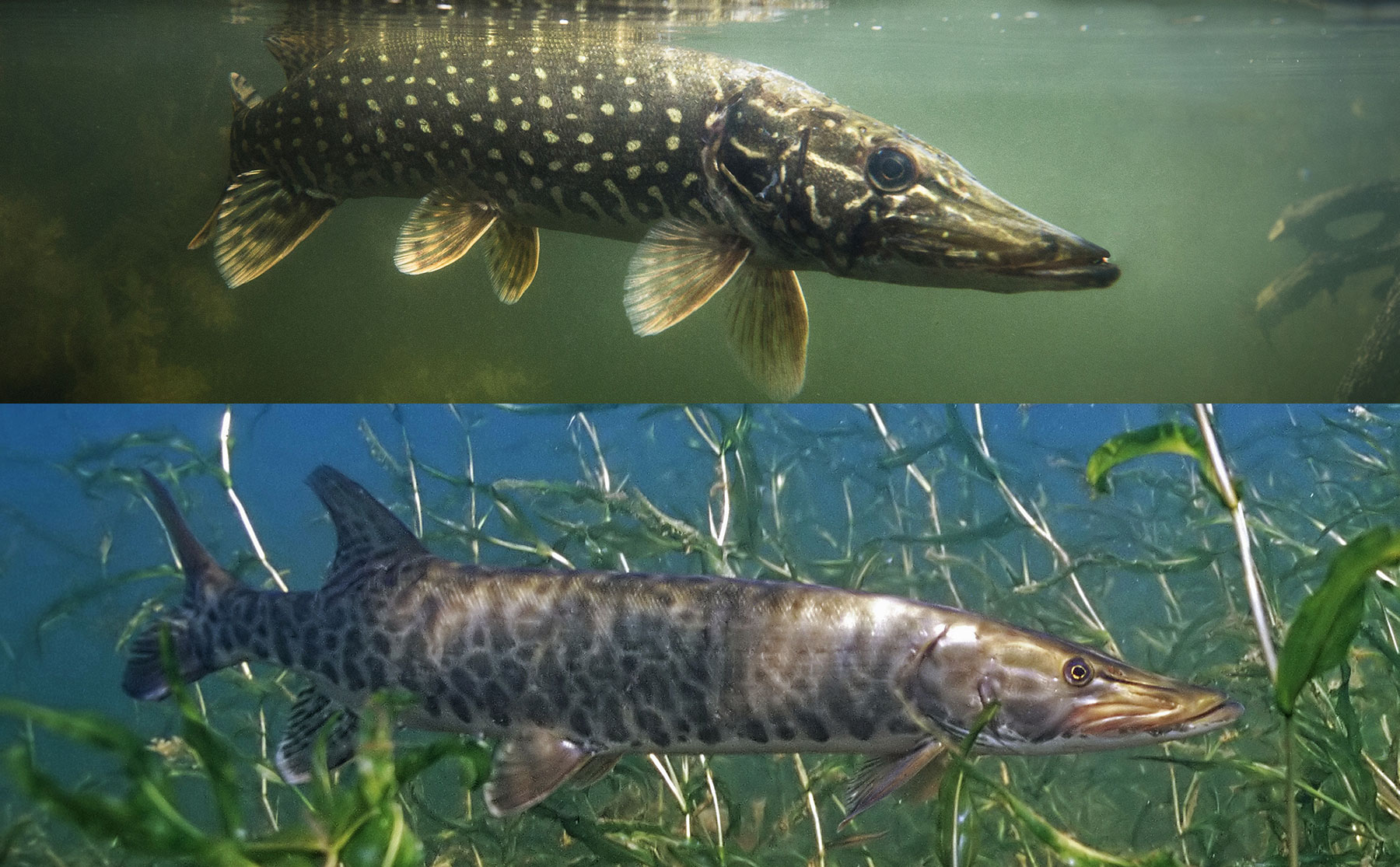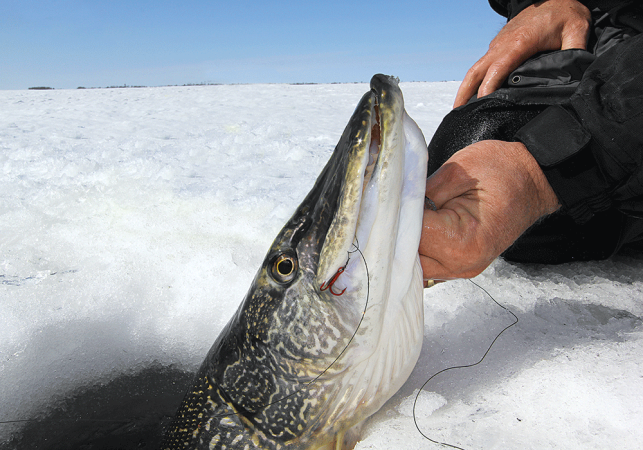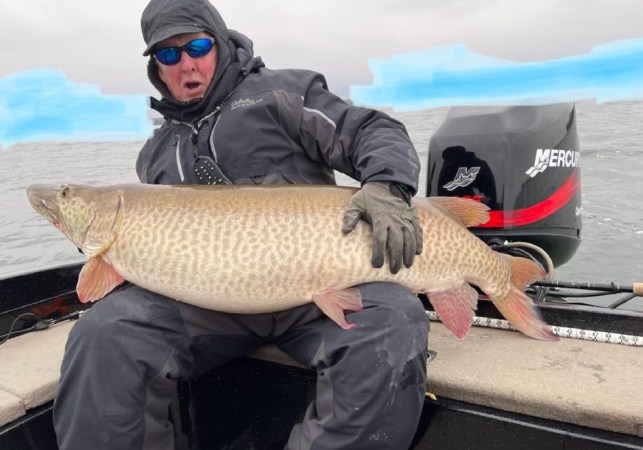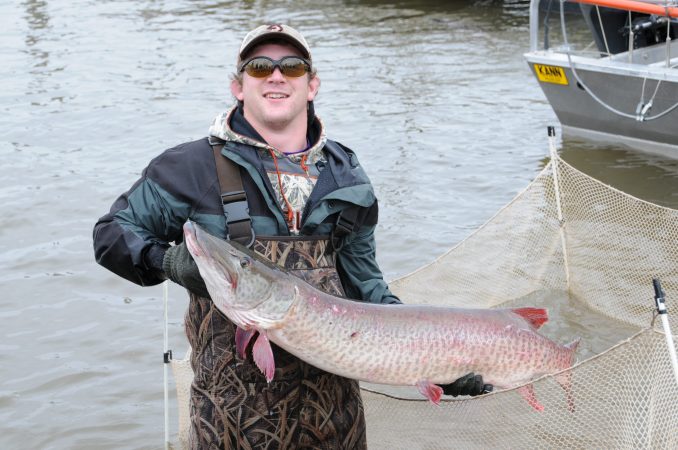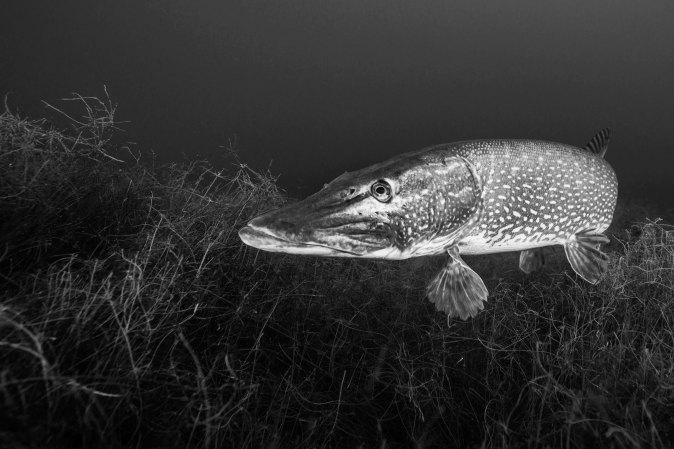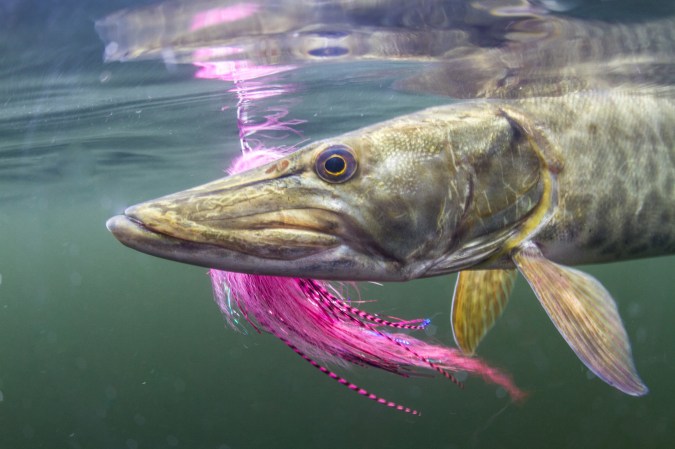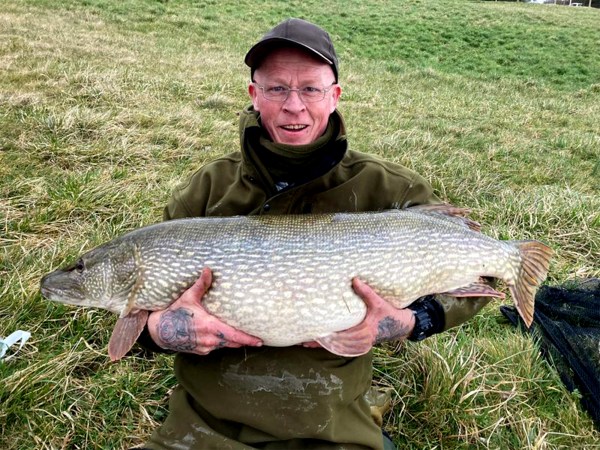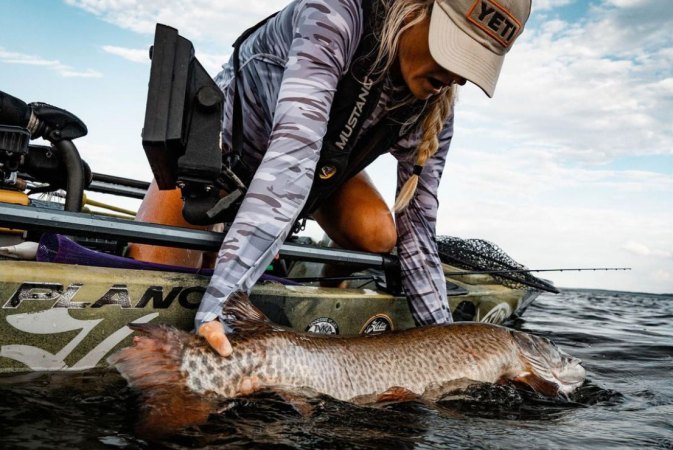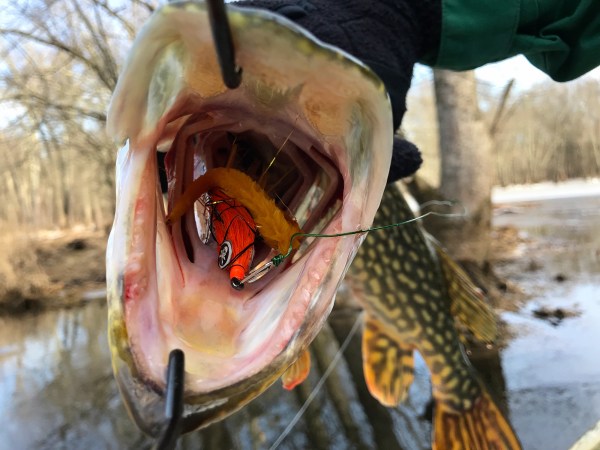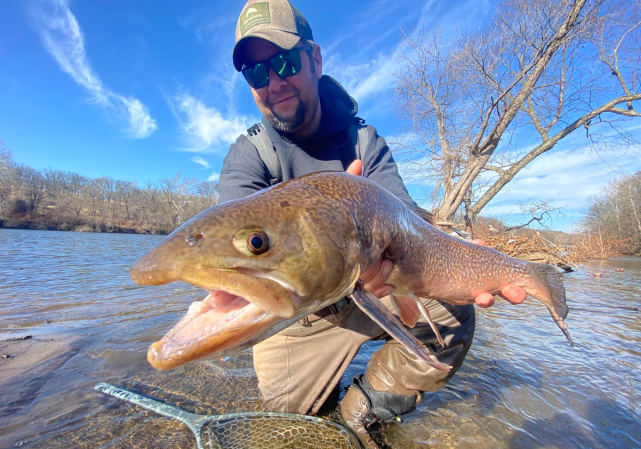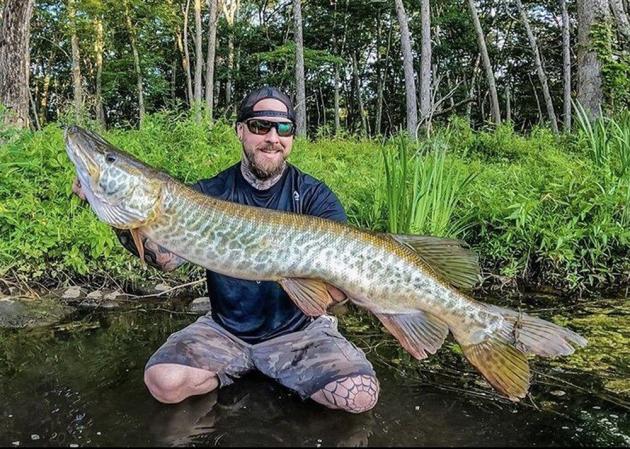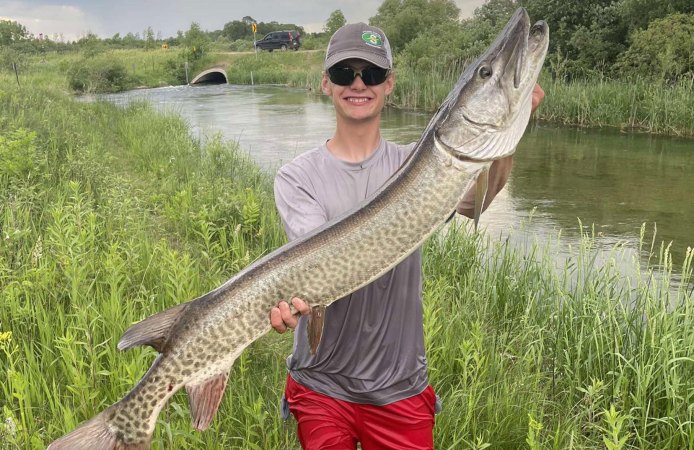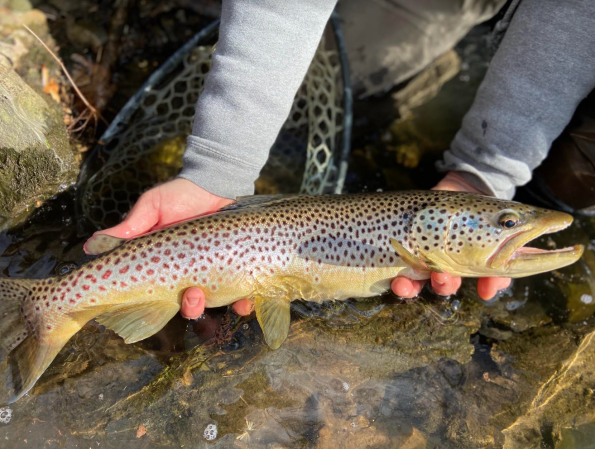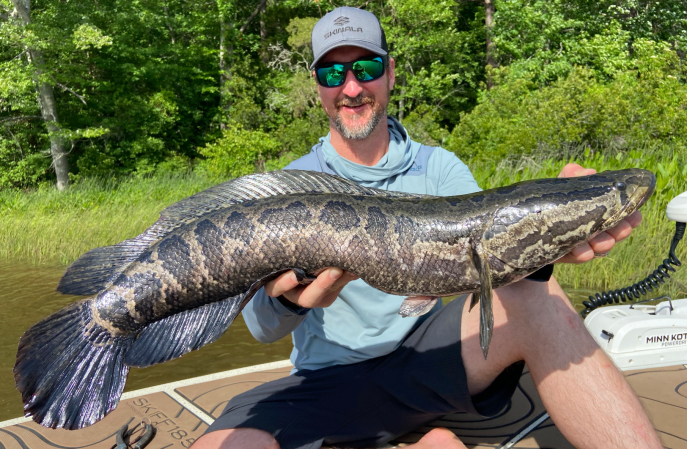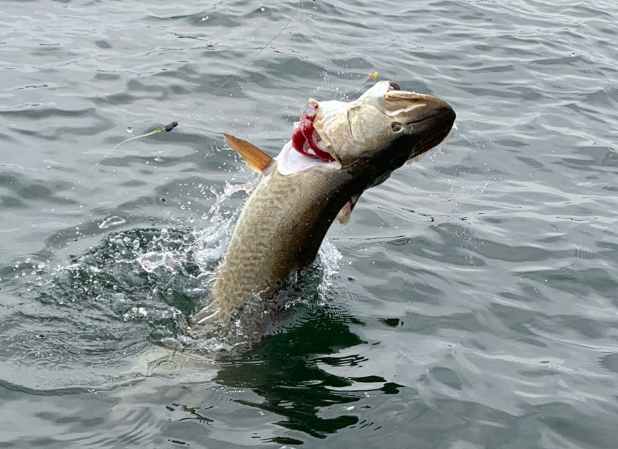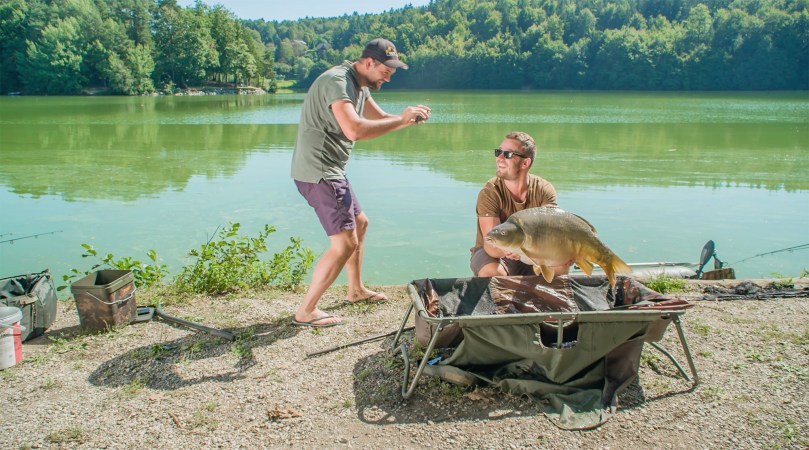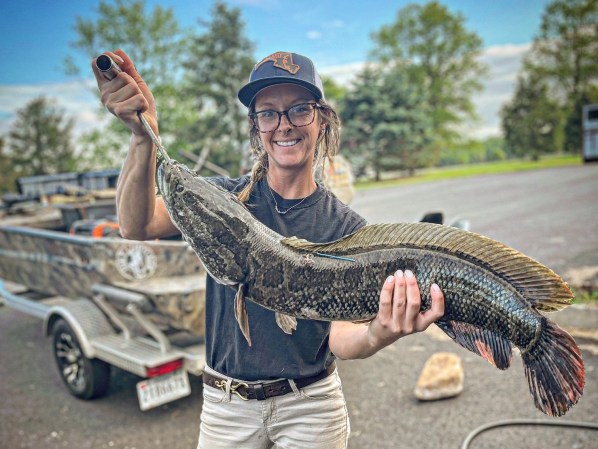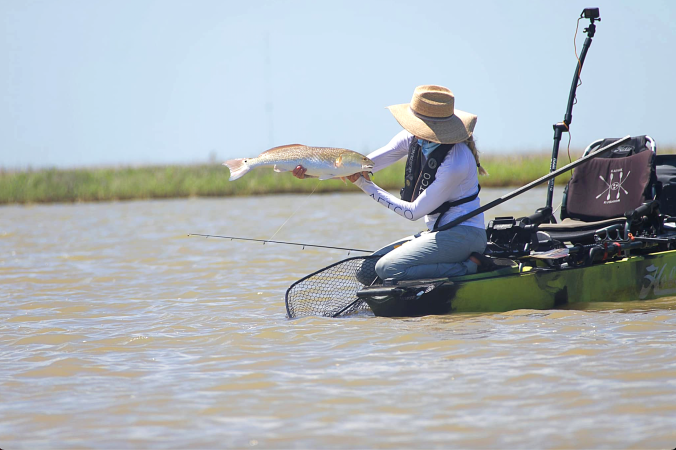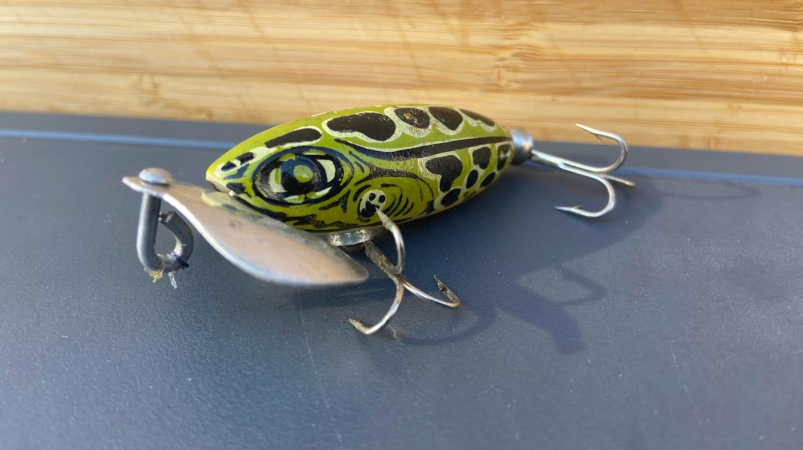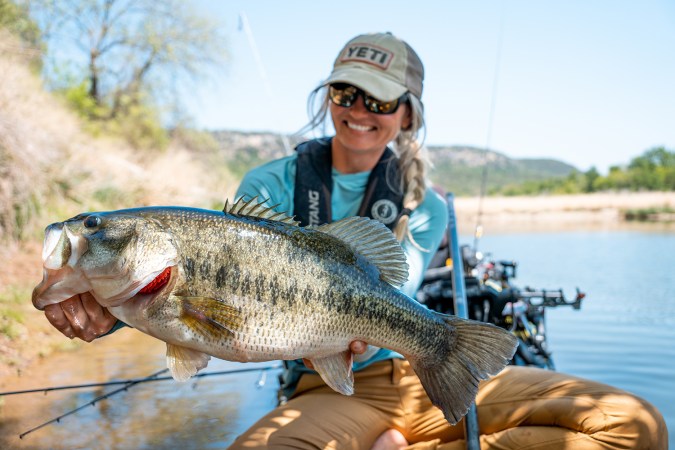Anglers looking to tangle with big, toothy predators in fresh water would be hard pressed to find better targets than muskie and pike. The two game fish are closely related, and they inhabit some of the same rivers and lakes in North America. If you were to compare muskie vs pike from a fishing perspective, however, the most obvious difference has everything to do with “catchability.”
To put it plainly, the mighty muskellunge is just flat out harder to catch than its close cousin, the Northern pike. Muskies weren’t nicknamed “the fish of 10,000 casts” by accident, and for many anglers, landing a trophy muskie is a pinnacle achievement. Pike, on the other hand, are more plentiful and generally more willing to eat a well-presented bait. Here, we’ll dive into the muskie vs pike debate by examining the two species, their habits and preferred habitats, along with advice on the best ways to catch them.
“Pike” the Family vs “Pike” the Fish
Part of the confusion surrounding pike and muskies stems from the fact that “pike” refers to both a single fish species and the larger family of freshwater fishes known as the Esox genus. In other words, muskies, pike, and pickerels are all members of the pike family, but when most anglers in the U.S. and Canada mention “pike,” they’re referring specifically to Northern pike (Esox lucius).
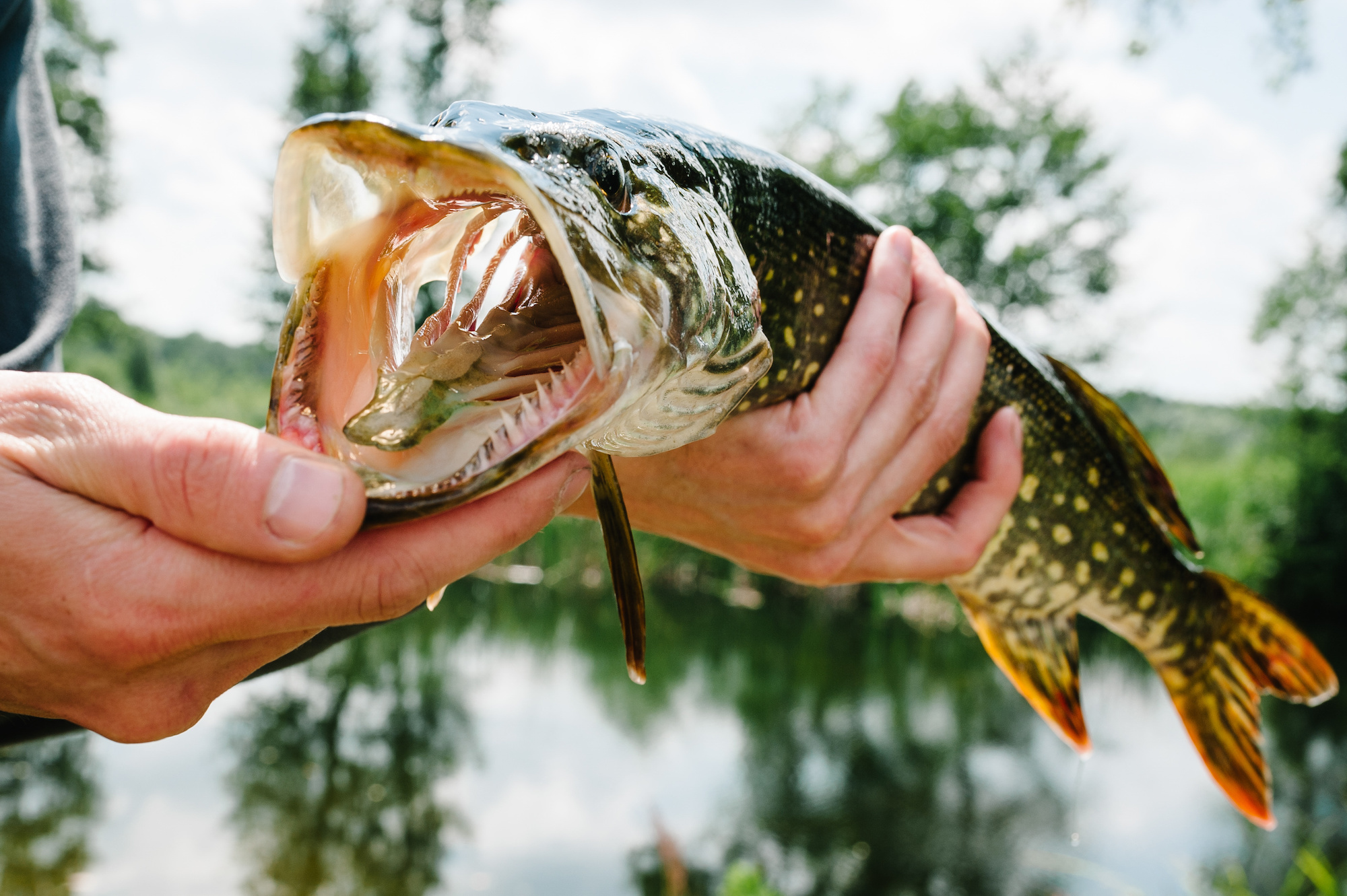
In physical terms, all members of the pike family look similar to one another. With camouflaged, torpedo-shaped bodies and large, broad heads full of sharp teeth, they’re natural predators that are built for hunting.
Upon closer examination, the differences between muskie vs pike become clearer. (Pickerels are easy enough to distinguish as they don’t grow nearly as large as pike or muskies.) Here are the key characteristics to look for.
How to Identify Muskies vs. Pike
The first key physical difference between a pike and a muskie lies in the fish’s tail. While both have deeply forked tails, a pike’s tail is rounded while a muskie’s is pointed at the ends.
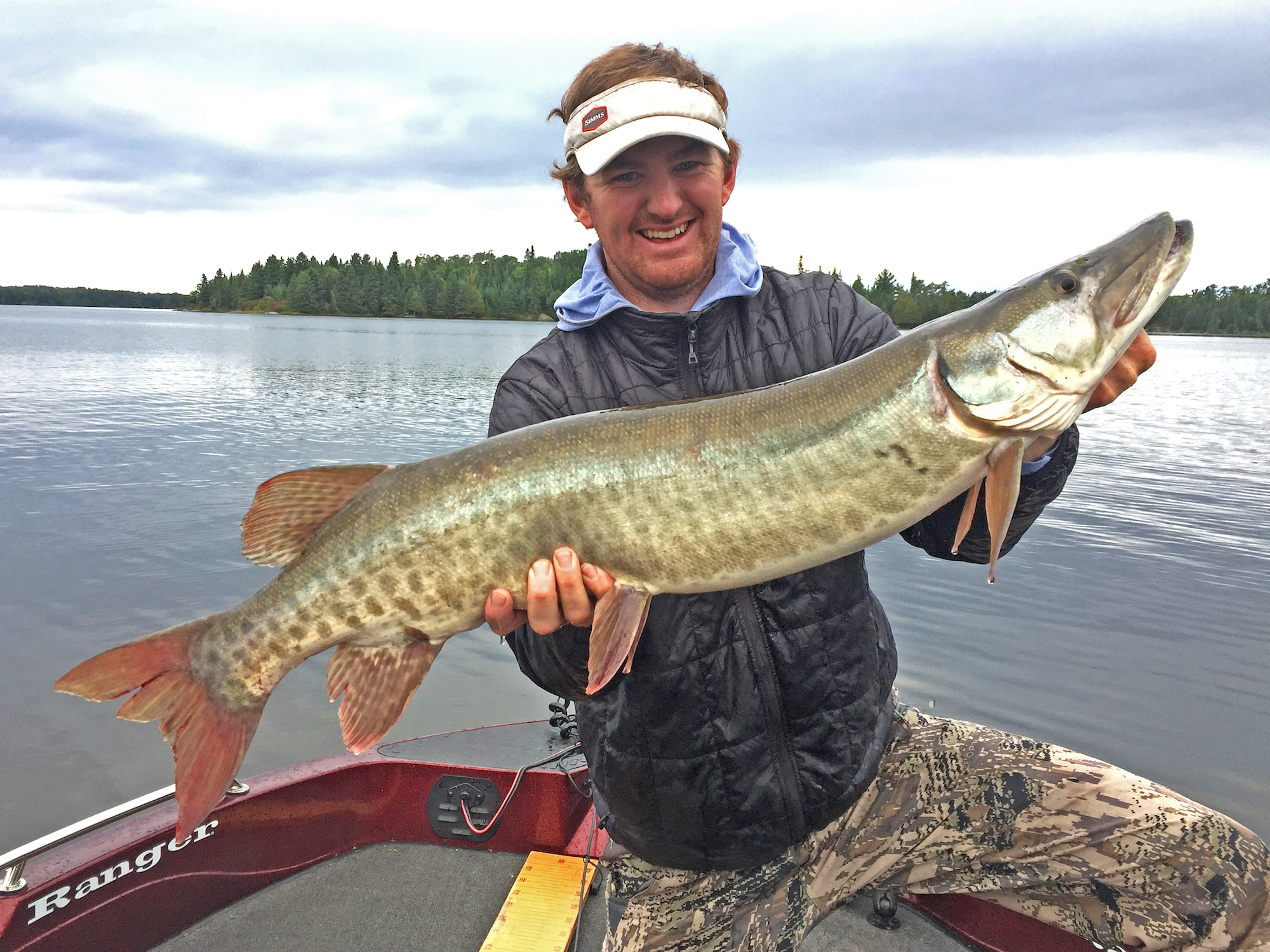
Another key identifier is the fish’s coloration. Northern pike are typically dark green with yellow or white bellies, and they have a distinct pattern of light, oblong spots on their flanks. Muskies, on the other hand, can range from silver to brown to green (or somewhere in between), and they typically have dark spots or stripes on their sides. A good rule of thumb is that muskies have dark spots (or no spots) on a lighter background, while pike have light spots on a darker background.
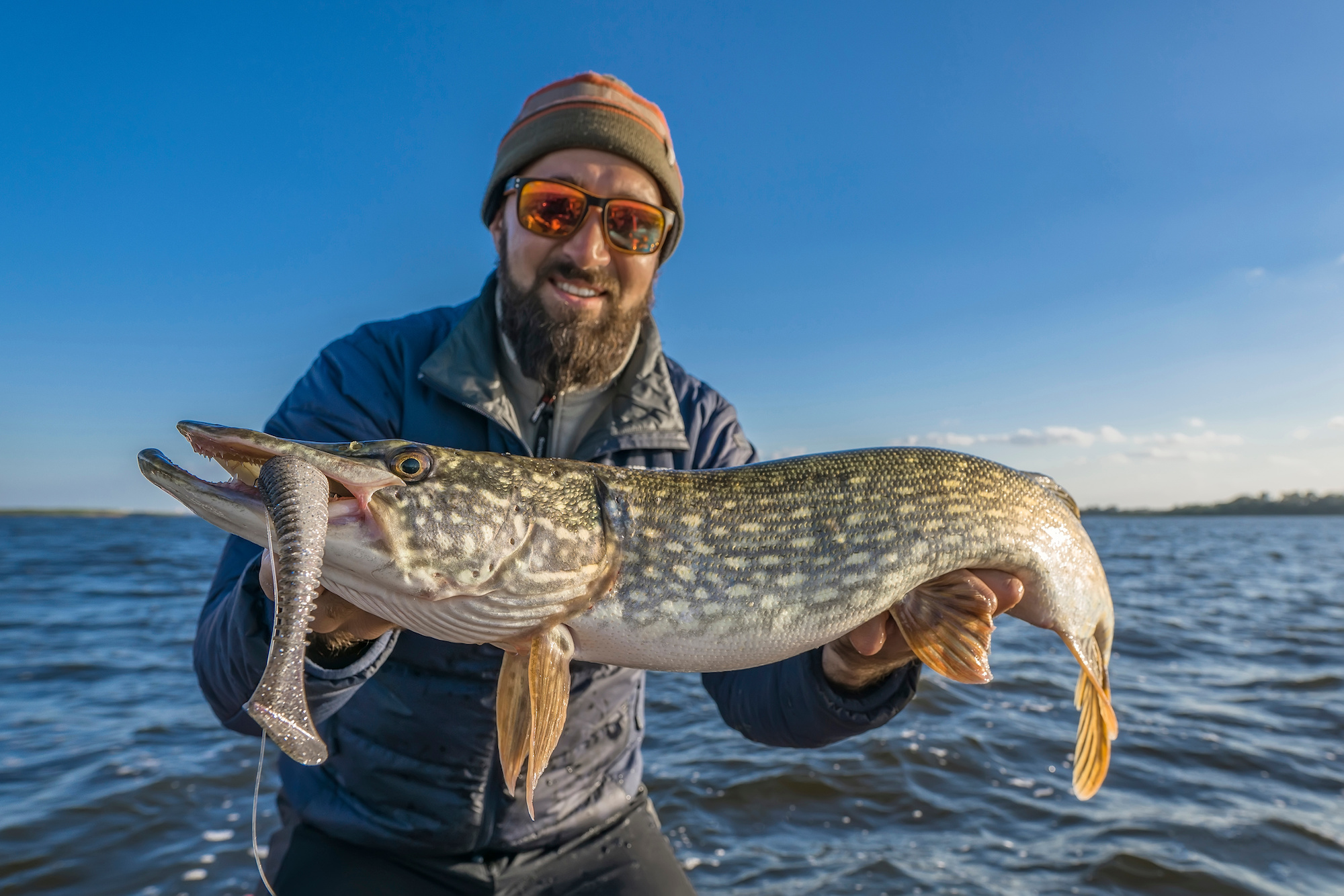
If after studying the fish’s tail and coloration you’re still unsure of the species, the most surefire way to tell a muskie from a pike is by counting the number of sensory pores on their lower jaw. Much like lateral lines, these pores help them hunt down prey by detecting vibrations and other movements in the water. They’re small but easily detectable if you look along the underside of the fish’s lower jawline. Pike usually have four or five (but sometimes six) of these sensory pores. A muskie will have at least seven.
Where to Find Muskies and Pike
A notable difference when comparing pike vs muskie is that Northern pike are found in more places. Their native range includes most of Alaska and Canada, along with most of the upper Midwest and parts of the Northeast. And because of their popularity as a game fish, they’ve been introduced to nearly every state in the U.S. over the years. (Northern pike are also native to northern Europe, and the world record pike, which weighed roughly 55 pounds, was caught in Germany.)
Muskies, on the other hand, are mostly confined to a small portion of North America. Their native range includes parts of lower Canada, the upper Midwest, the Great Lakes and its tributaries, the Ohio River Basin, and parts of Appalachia. The world-record muskie came from Wisconsin and weighed over 67 pounds.
Both fish inhabit freshwater lakes and rivers, where they prefer water temps between 50 and 70 degrees. Pike are more tolerant of cold water and are frequently caught by ice fishermen, while muskies will often seek out deeper, warmer water during the winter months. Muskies are also more willing to migrate long distances, both for spawning and hunting purposes.
Tiger Muskies: Pike and Muskie Hybrid
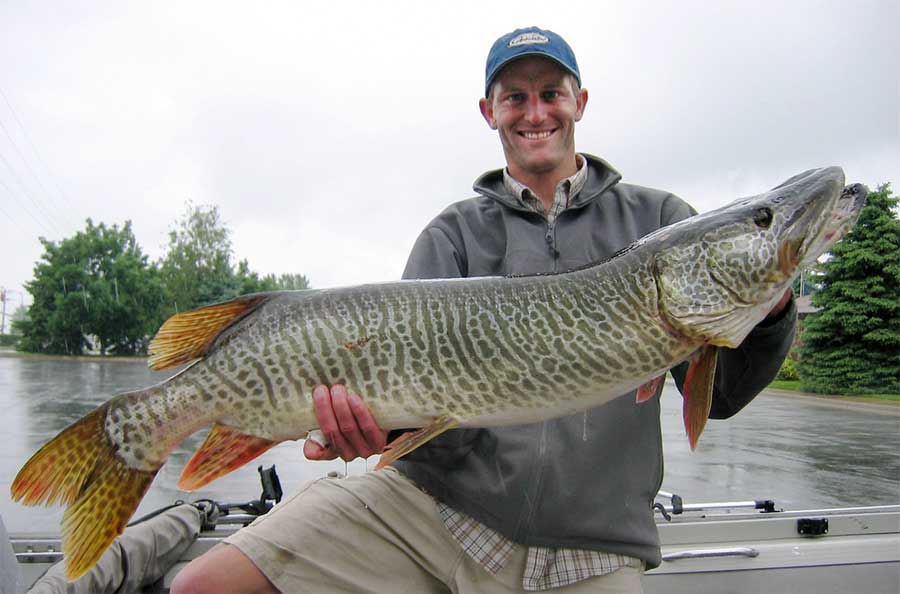
While muskies have been stocked outside their historic range, modern-day fisheries managers are just as likely to introduce tiger muskies, which are a cross between a female muskie and male pike. These sterile hybrids are often used to control other fish populations, but they’ve become a popular target species for anglers as well.
Tiger muskies have a reputation for growing quickly and are more tolerant of warm water. They’re a striking game fish that got their name from the bright vertical stripes on their sides.
Why Muskies Are Harder to Catch than Pike
The difference in their modern-day ranges helps explain why pike are easier to catch than muskies. There are simply way more pike living in North America than there are muskies. But the muskie’s reputation as the “fish of 10,000 casts” has more to do with personality than population.
Scientists have studied muskie behavior using controlled experiments in stocked ponds, and they found that some muskies were predisposed to being caught, while others were more elusive and never struck a lure. They also found that muskies are extremely sensitive to angling pressure, even compared to other game fish species like bass.
Pike, on the other hand, are known to be aggressive predators. This is especially true of mid-sized pike, which will crush bass lures, live bait, and even big muskie lures without hesitation. Many anglers in the upper Midwest refer to these pesky predators as “snakes” with no sense of endearment.
To better understand the differences between the two game fish, and how difficult it is to catch a muskie vs a pike, Outdoor Life caught up with two fisheries biologists from the Wisconsin Department of Natural Resources.
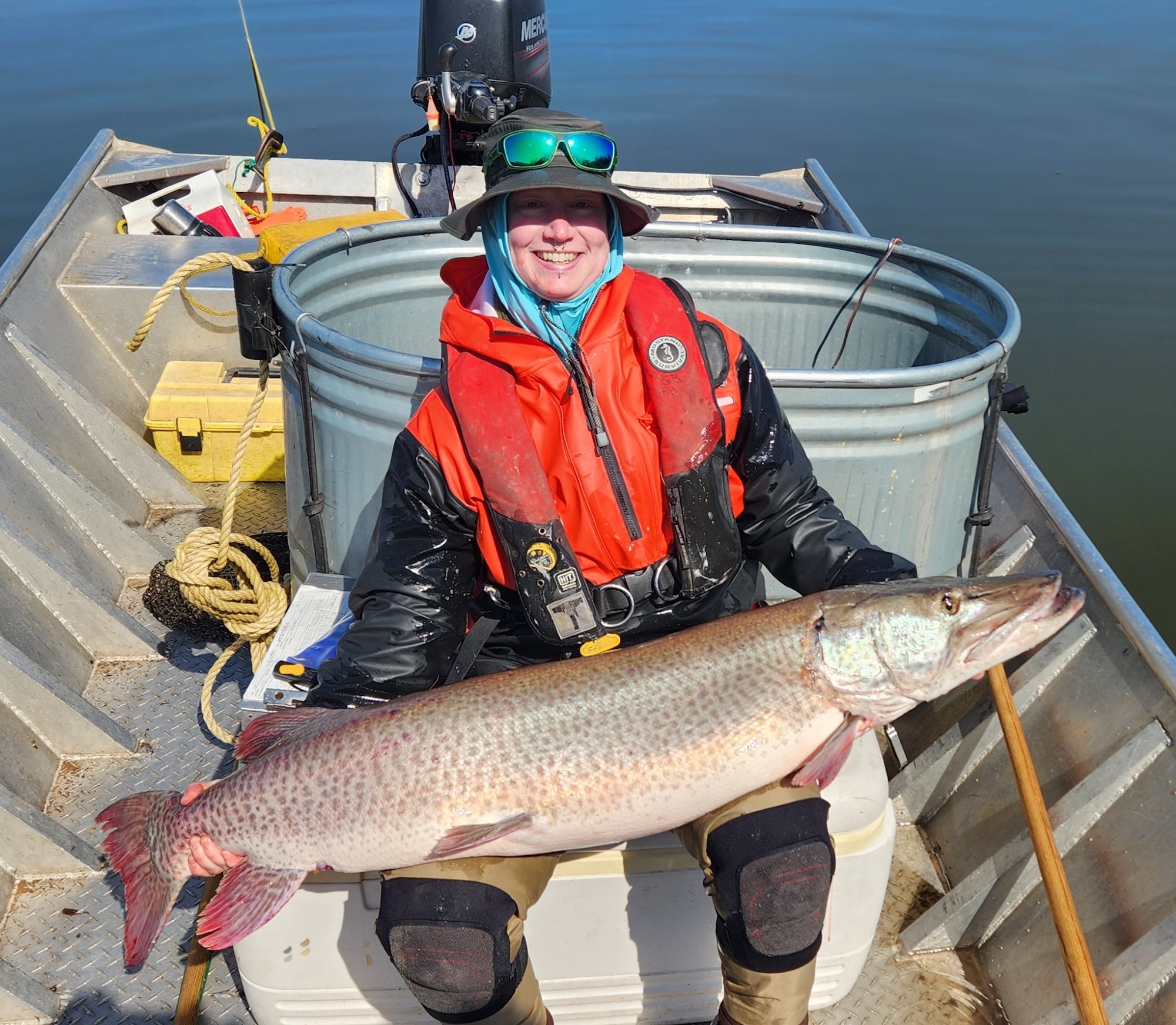
“You can find them in similar habitats and catch them in similar environments at times.” says Jason Breeggemann, who manages the muskie fishery in Green Bay. “But the muskie fishermen here, they’ll put their time in. They’re fishing for just one fish and hopefully it’s one of the giants.”
And Green Bay, according to Breeggemmann, is home to some of the biggest muskies in North America. He and his team regularly net fish over 50 inches long when sampling in the Fox River, a tributary of Lake Michigan where a lot of the Bay’s muskies migrate in the late winter and spring months. He says muskies typically seek out big, rocky rivers to spawn, and before dams cut off certain migration routes, muskies could be found in pretty much every river that connects with the Great Lakes. This is no longer the case, and while muskies are doing well in Lake Michigan, the DNR stocks the lake (and others) with hatchery fish in order to maintain a viable sport fishery.
Pike, on the other hand, are far more plentiful in Green Bay. They have a self-sustaining population that doesn’t require stocking, according to the DNR’s Tammie Paoli.
“Pike in Green Bay grow much quicker than in most of our inland lakes because of the sheer size of the water body and the available forage,” Paoli says. She adds, however, that what the state’s inland pike lack in size they make up for in sheer numbers. She says they can be found in practically every one of the state’s inland lakes and calls the species “ubiquitous,” especially in the northern reaches of Wisconsin.
In terms of their preferred habitats, Paoli and Breeggemann both point out that pike are more at home in wetlands and shallower lakes with heavy vegetation. The pike in Green Bay will typically run up ditches to find flooded grasses to spawn in. As classic ambush predators, this gives them cover to hide in and hunt from.
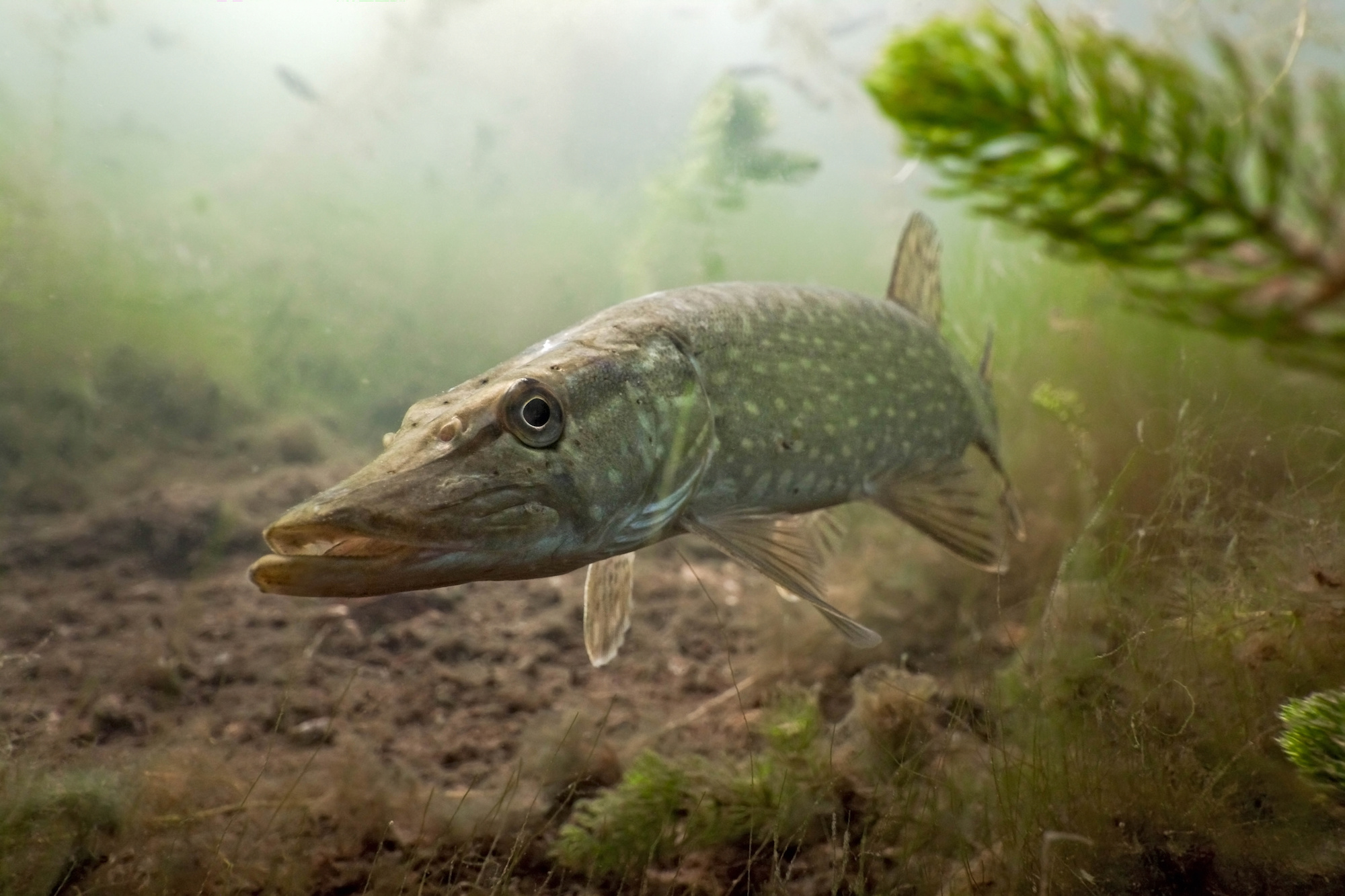
Muskies also use heavy vegetation to their advantage when hunting, and Breeggemann says they’re often caught around weedlines and tributary mouths in the spring. Not coincidentally, these are the same areas where many of the baitfish in Green Bay like to spawn.
During the summer months, Breegemann says anglers are better off targeting muskies in the open bay, where they cruise over mudflats chasing forage fish. People typically troll for them with stout rods and beefy reels, trying to cover as much water as possible. Fishing for muskies in open water effectively also requires top-end electronics.
Peak season for pike fishing is usually during the late winter on Green Bay, Paoli says. They’ll typically move into shallower areas closer to shore as spawning season approaches, and she says that some of the biggest pike of the year are typically caught through the ice. (Wisconsin closes muskie fishing from December to May each year.)
Pike can certainly be caught during the warmer months on Green Bay, and catching fish really just revolves around finding the bait they’re after. They’ll eat everything from alewives to birds to smallmouth bass, and Paoli says that smaller pike are always on the menu.
Read Next: What Do Bass Eat?
“Are they cannibalistic? Certainly. We did some young of year trapping in these tributaries and we’d see two-inch pike with tiny pike tails sticking out of their mouths. It just goes back to the fact that they’ll eat whatever is most available to them.”
All things considered, it’s really the pike’s voraciousness as a predator that sets them apart from muskies—which typically grow slower and choose their meals more carefully. And even in a place like Green Bay, where both species can be found, anglers are much more likely to hook into a pike.
Looking at the numbers, Paoli says the DNR’s creel surveys show anglers catching around 25,000 pike from Green Bay annually. This is compared to the roughly 4,000 muskies that are typically caught from Green Bay each year.
Final Thoughts
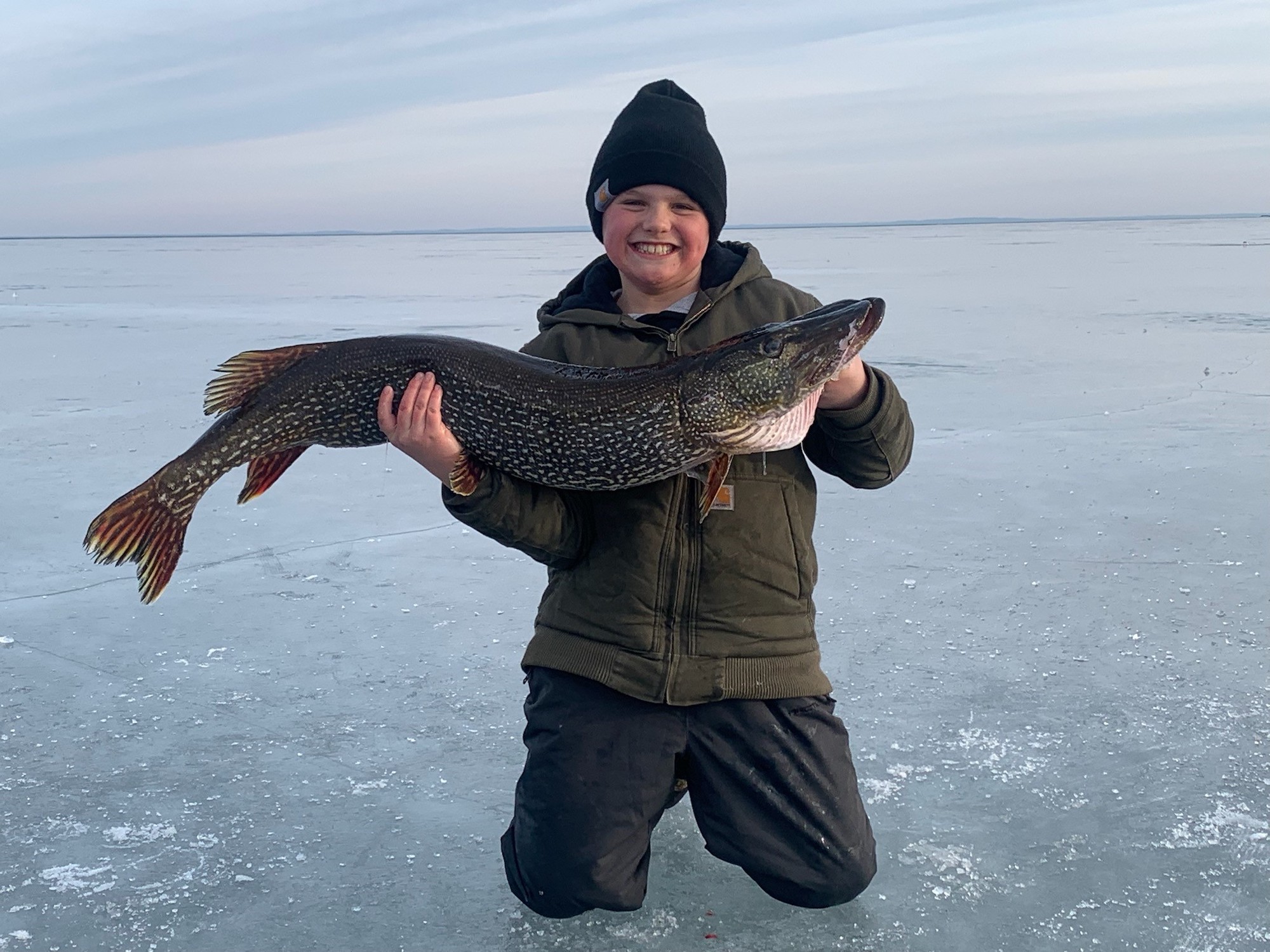
Pike and muskies are closely related fish with similar habits, looks, and hunting styles. They have similar ranges, although the muskie’s home range is more concentrated. The two species can be distinguished from another by identifying the key differences in their tail shapes, color patterns, and the number of sensory pores on the undersides of their jaws.
While both species can reach trophy sizes, muskies grow larger than pike, and they’re much harder to catch. This is mainly because pike are more voracious than muskies, and they aren’t as picky when it comes to chasing down a meal. Pike are also more abundant and widespread in the U.S.

